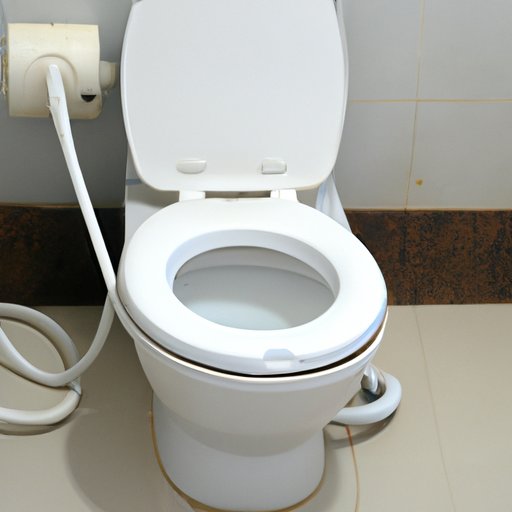Introduction
Is your toilet running long after you’ve flushed it? A running toilet wastes water and can increase your water bill. A common misconception is that the problem will fix itself, but it will only get worse. Don’t worry; fixing a running toilet can be easy and can save you money in the long run. Read on to learn how to fix a running toilet without a plumber.
Here are the five topics we will be covering:
- Step-by-Step Instructions
- Quick Fixes
- Prevention Tips
- Video Tutorial
- Expert Advice
Step-by-Step Instructions
Before we start, it is essential to understand the different components of a toilet.
A typical toilet has the following components:
- Flush lever
- Flapper or flapper seal
- Float apparatus
- Fill valve or ballcock
The flapper is the part that releases water from the tank to the bowl. The float apparatus controls the water level in the tank, and the fill valve sends water from the pipe into the tank.
A running toilet can be caused by several issues, including:
- A flapper that is worn out or unable to form a tight seal
- A float apparatus that has malfunctioned or needs to be adjusted
- A fill valve that is not working properly
- A chain that is too long or too short
Here are the steps to fix a running toilet:
- Remove the tank lid and inspect the flapper.
- If the flapper is worn or damaged, replace it.
- If it is dirty or doesn’t form a tight seal, clean it.
- Check the chain that connects the flush lever to the flapper. Ensure it is not too short or too long.
- Inspect the float apparatus and adjust it if needed.
- If the fill valve is not working correctly, replace it.
- Turn the water off and flush the toilet once.
- Install the new parts and flush the toilet several times to confirm the issue is fixed.


If you are uncertain about any of the steps, there are many online resources with diagrams and videos to guide you through.
Troubleshooting Tips
If you have followed the steps above and your toilet is still running, here are some troubleshooting steps to take:
- Check the valve that controls the water flow into the toilet
- Make sure the fill valve and float apparatus are correctly installed
- Examine the flapper carefully and ensure it seals tightly.
- Check the chain – it should be tight, but not too tight.
If none of these solutions work, please consult a professional plumber.
Quick Fixes
If you’re in a rush or want to fix your running toilet temporarily, here are three quick fixes to try:
- Jiggle the flush handle to ensure the flapper is sealing tightly
- Bend the float arm gently to adjust the water level
- Shut off the water valve to the toilet and check for mineral buildup on the float apparatus or fill valve.
It is incredibly crucial to note that quick fixes are not a permanent solution and should be followed by proper maintenance to prevent further issues.
Prevention Tips
Preventing running toilets is much easier than fixing them. Here are a few prevention tips:
- Regular maintenance is critical to keeping your toilet running correctly.
- Avoid flushing anything except toilet paper and human waste.
- Regular cleaning is important for the flapper and the fill valve.
- Install water-efficient toilets and fixtures.
Video Tutorial
For a more visual guide on how to fix a running toilet, you can watch this video tutorial:
The video will take you through the steps to stop a running toilet, and should be followed by proper maintenance to ensure the fix lasts.
Expert Advice
We consulted with Mick from A2B Plumbing in Phoenix, Arizona, to provide some expert advice on fixing running toilets.
Mick says, “The most common mistake I see in fixing running toilets is not replacing all the necessary parts. A worn flapper or fill valve can cause recurring issues if not addressed. Regular maintenance is also essential to prevent more significant problems down the line.”
Conclusion
In conclusion, fixing a running toilet does not have to be daunting. By following the step-by-step instructions and tips above, you should be able to solve the problem without the need for a plumber. Quick fixes can be temporary solutions, but proper maintenance and prevention techniques are critical to prevent recurring issues.

